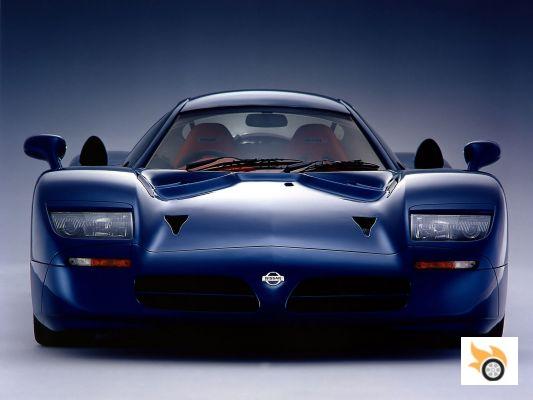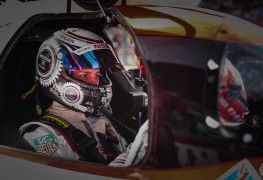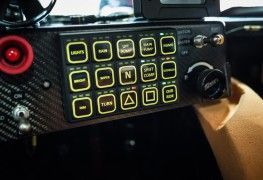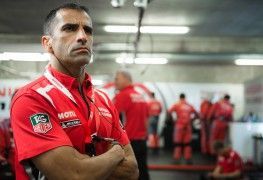After the good results of Nismo with the GT-R, in spite of its limitations, the Japanese company decided to bet again to try to win Le Mans, with a project with a big budget for two years, 1997 and 1998. This is how the brilliant R390 GT1 was born.
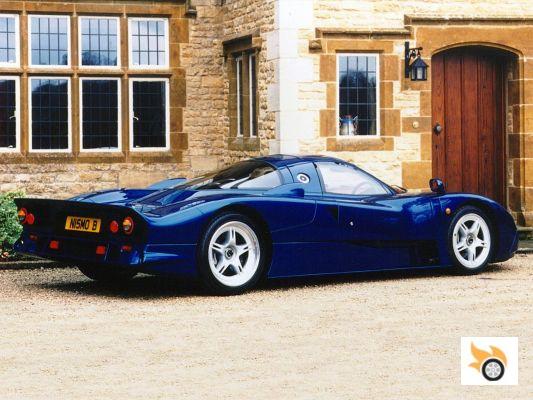
TWR created a completely new car for Nissan in nine months
As I explained above, the ACO regulations to compete in Le Mans required to have a homologated road car with at least one unit to participate in the race. For the manufacturers this meant creating race cars under the dimensions proposed in GT1, and then figuring out how to create a road-going unit.
Nissan turned its sights back to the racing production heartland of the planet, the UK. There it contacted TWR, which had been creating successful racing Jaguars for years, especially the XJR-9, which had mutated into a production unit, the beautiful XJR-15. Working at TWR at the time was Tony Southgate, probably the most famous endurance engineer, still to this day, even if he has been retired for some time.
All of Jaguar's sporting successes were on Southgate's shoulders at the time. Interestingly, Southgate, who had also worked in Formula 1 for teams such as Lotus, would have a career ending that is still reflected today, as he would be the mastermind behind the first Audi R8R and R8C, and would later be an external consultant on the Audi R8 LMP that achieved the first victory for the Ingolstadt-based company at Le Mans.
But back to the R390 GT1. Southgate and his team were tasked by Nismo to create the most competitive carbon fiber car possible. Southgate's contact at Nissan was Kunihiko Kakimoto.
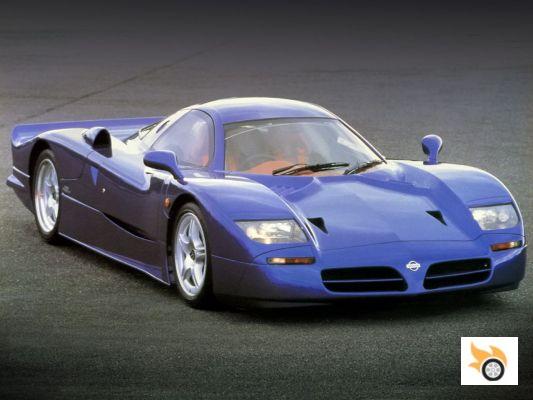
The "Nissan-faced" design of the car was the work of Tony Southgate, although Ian Callum would refine it in detail.
The main problem with the project was that it was outlined and approved in September 1996, and by June 1997 Nissan wanted to have the car racing at Le Mans, leaving only nine months to create a race car from scratch.
There was little time to develop the car, so TWR and Nismo had to look to an existing Nissan powerplant as the basis for the project. Originally the RB28DETT, the 2.8-litre variant of the GT-R engine used in the R33 LM, was intended to be used. The problem was that the block was already very old in its design, being made of cast steel, which made it heavy. In addition, inline six-cylinder engines do not offer sufficient torsional rigidity to use them as a self-supporting element in the chassis and hang the rear gearbox from them, and they are tall engines.
The search was on for an engine, therefore, that was already developed and tested, offered an aluminum alloy block and had a "V-shaped" layout to reduce the height of the center of gravity and improve torsional stiffness. The search ended quickly: Nissan had the VRH35Z, the engine designed to power the Nissan R90 and its successors, as we discussed here days ago.
For the R390 GT1 it was decided to create a new evolution of the engine, called VRH35L. The engine maintained the dimensions of 85×77 (bore per stroke in millimeters) of the original engine, and was, as you know, an eight-cylinder V8, with aluminum alloy cylinder head and block, four valves per cylinder and two camshafts per bank.
It had a turbocharger for each bank of cylinders, these being signed by IHI. For the new engine was chosen lower boost pressure and a higher compression ratio in the engine, in search of lower lag and more reliability. All in all, the engine produced around 650 horsepower for racing, and 350 for "civilian" use.
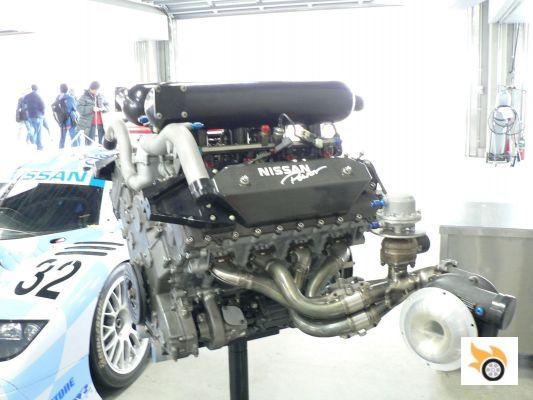
It was decided to couple the engine to a sequential six-speed XTrac gearbox mounted transversely behind the engine, to reduce the wheelbase and the space spent on it.
With the powertrain sorted out. Southgate didn't have much time to create a chassis from scratch either, so the Jaguar XJR-15 monocoque was taken directly as the starting point for the R390 GT1. The two subframes of the car, the front and rear suspension subframes, were completely different, while the monocoque gained some width in its side members to increase torsional stiffness and meet the dimensional dimensions allowed in GT1.
Since a road-registered car had to be built, and that involved knowledge that TWR didn't have, Tony Southgate assembled a small team of people who had been working at Lotus before on production cars. Southgate's idea was to design the R390 GT1 as a race car, two weeks ahead of the production team, who would re-design the car for the civilian variant to be homologated, and do the necessary paperwork to do so. Southgate points out that many of the suspension elements, for example, were different, to save costs, as the street car's suspension didn't have to be so expensive (for uniball ball joints, dampers and springs).
The car was designed to mount a water radiator in the front, while two periscopes above the rear wheels served as air intake for the intercoolers and turbochargers, as well as the oil radiator. To give it a "Nissan" look, Southgate, who claims that Nissan never asked him to do so, decided to integrate the 300ZX Z32 headlights and the "wing-shaped" air intakes that Nissan used as its brand image at the time into the front end.
The design was well received in Japan. Southgate then commissioned Ian Callum (yes, Jaguar's head of design right now, but then working at TWR) to "clean up the design" of the bodywork. Callum worked on the radii between panels, the position of the headlights and other elements that, without having any aerodynamic impact, made the car look much better.
With the project on schedule, TWR assembled four chassis, one for the street car, three for the first two race cars. The car needed to pass the 50 km/h impact test against a rigid concrete block in order to be homologated as a road car, but a defect in the design of the water radiator anchor (which acted as an energy absorbing element of the impact) caused it to dislodge, and the chassis was severely damaged, while the car failed the test.
The problem was serious, as with a damaged chassis, TWR did not have time to create another test chassis. The risky decision was taken to redesign the radiator mount and crash test with a racing chassis. Fortunately for the British, the test went well, and the chassis was unscathed and could be sent back to TWR to be fitted to a race car.
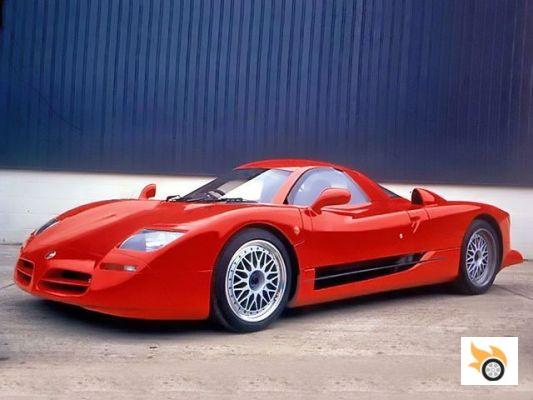
The first red street prototype, created to homologate the car for the street, ended up destroyed in the frontal impact test.
For 1997, prior to the race, TWR completed the only road-going example of the car to be created. Although you may read around (Wikipedia included) the myth that two units were built, the reality is that only one road-going chassis was made, which was homologated in the UK, where it was also registered to obtain ACO permission to race at Le Mans. Although it was proposed to sell the car for a million dollars at the time, Nissan ended up keeping it in their storage facilities. The legend of the second unit is related to the car used for homologation, a red unit that was the one that was destroyed in the crash tests and was never repaired.
With the road car mess over, TWR turned its attention to the race car. At Le Mans testing prior to race week, the R390 GT1, which had earned its name as the successor to Prince's legendary, and already discussed here, R380, proved extremely competitive. The V8 engine could stretch to well over a thousand horsepower in qualifying configuration, and with that power, the R390 GT1 managed with Martin Brundle to beat all its rivals on the clock.
In pre-race testing, the R390 GT1 was the fastest car.
The week of the race the car promised to be in a position to win, but in the technical checks, the ACO considered that the trunk space of the Nissan did not meet the requirements of the regulations, forcing the Southgate team to find a solution on the XTrac gearbox that ultimately would load the chances of Nissan in the race.
In qualifying things weren't going badly, with fourth, 12th and 21st place finishes. The race was what mattered, but the modifications to the rear of the bodywork took their toll. The XTrac box overheated and failed in all three cars. Two of them had to retire after trying to change it, while the remaining car, with the same problems but after being able to change the box, managed to finish 12th. Once again, it all came as a bit of a shock, especially as without the regulatory problem, the car was capable of fighting for the victory.
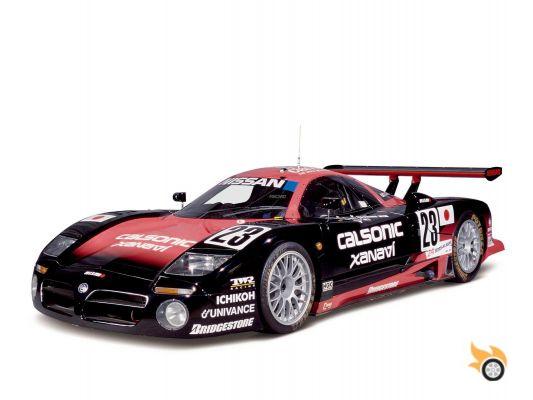
Gearbox problems wrecked Nissan's chances in 1997 with a triple retirement
In 1998 Nissan came out with an improved variant of the R390 GT1, which had a new rear end design to avoid the gearbox cooling problem, allowing Southgate to redesign and improve the aerodynamic performance of the car's rear end, and with more miles of experience.
The aerodynamic improvement of the car was achieved by also being able to use Nissan's full-scale wind tunnel in Japan. These were not the only new features of the car, which also integrated a traction control system and an ABS system for the race.
After extensive testing of the new gearbox cooling, Nissan finally decided to create its own sequential system, to avoid reliability problems with the XTrac and have a tailor-made solution.
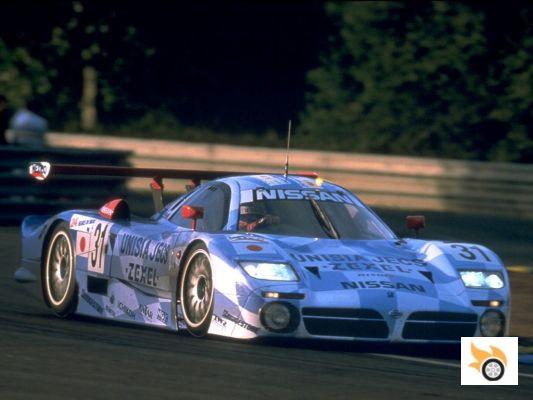
In 1998, the R390 GT1 took third place overall. The four cars that started the race all finished it.
For Le Mans the Japanese took four cars to the race. The Mercedes-Benz CLRs and Porsche 911 GT1s were faster in qualifying, but the Daimler cars were no match for them in the race. Nissan's problem was with Porsche, who in their last year at Le Mans until the current comeback, managed the 911 double, leaving the R390 GT1s in third, fifth, sixth and tenth. The achievement for Nissan was huge: a podium and four cars on the finish line out of four lined up. Yes, they had lacked some speed, but they were on the right track. And then... Then the ACO decided to do away with GT1, and move to the prototype-only format, forcing Nissan to switch to the R391 project.
Even though it didn't achieve its ultimate goal of victory, the R390 GT1, which in its road-going version briefly managed to be "the fastest production car on the planet" (production?), has its place in popular history as the best road-going Nissan ever made. Or at least the most expensive.
